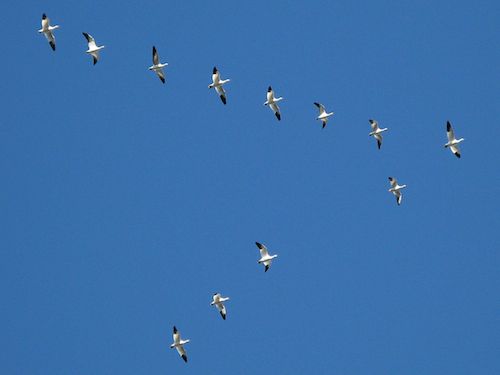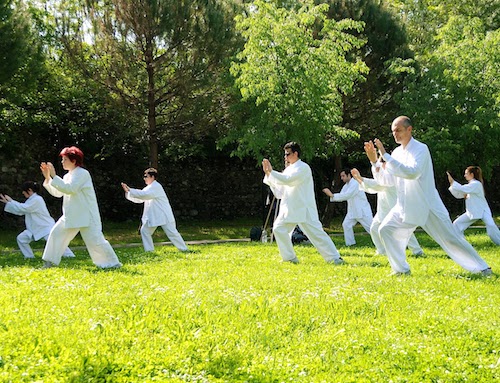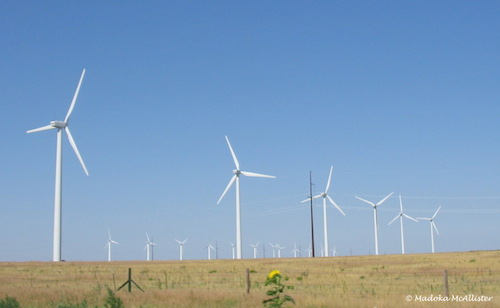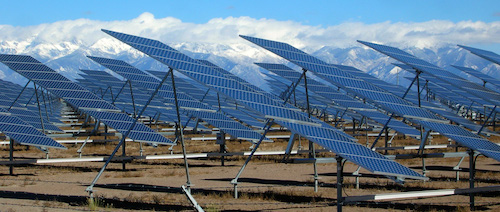by Alan McAllister, CCHt PhD-phys
published in Shakti Yogi Journal
Flying geese, a long V in the sky over head, winging north in the renewal of spring. Long distance flyers whose main ally is the air beneath their wings, but whose main obstacle is the resistance of that same air through which they must fly. They fly in a V like the wake of a sail boat, the lead goose parting the air in front, reducing resistance for the others flying through that hole as it spreads out behind, each keeping it open for the next goose in line. The lead changes out at regular intervals, a fresh goose moving forward replacing the tired lead goose which cycles to the rear and an easier position deep in the wake. Collaborating, resistance is minimized, the effort for each goose is reduced and the collective can even soar across the Himalayas.
On the ground humans pushing their way through deep snow work together as well. Each person in turn tramps the snow deeper, reducing resistance for the next. They also rotate the lead like cyclists in the tour de France. The advantages of co-operation; reduction of resistance, conservation of energy, and efficiency of action, are easy to see in extreme situations or special circumstances. These principles are equally applicable in most aspects of everyday life.
Basic principles of the natural world such as those found in physics or biology, are pervasive. Efficiency is found everywhere one looks. Water runs down-hill, taking a course of least resistance, reducing its potential energy and powering mills and turbines along the way (“Potential Energy”). Runs become streams; creeks become rivers as water gathers together on its way to the sea, following the easiest paths year after year.
The goal in T’ai Chi is to relax, to move effortlessly. Holding postures, I feel into the body, listening to the force of gravity. It flows effortlessly through me when my body is in proper posture. It will pull and tug on me when I am tense and resisting it. Over time gravity points out all the places I am holding on, resisting, fearful of falling or letting go. With practice I learn that I can relax, let go, and not fall down. Releasing effort down into the ground, I become solid and light, free and effortless. As in all human endeavors, there is a direct correlation between fear, resistance, and effort. Releasing internal resistance, the individual parts of the body/being become an efficient, collective: whole. By listening to gravity with your body, you can learn how to do anything in the most efficient way; you can conserve energy by allowing your body to be as graceful and effortless as possible.
The practice of yoga is likewise a space to learn, to listen to the body, to feel into gravity, find tensions, relax and release; to become whole. Breathing in and breathing out you can practice effortlessness and connecting to your Self (McAllister “Clearing Stones”), cultivating inner harmony and coherence.
Entering a dark room you flip a switch, a circuit is closed and electrons flowing along wires in the wall move forward to the light bulbs that bring light into the room (“Electric Light Bulb”). The copper atoms in the wires are aligned in regular crystal patterns, allowing the electrons to flow easily from one to the next. At room temperatures there are imperfections in the crystals as well as misalignments between crystals so that as the electrons move they bump and shove occasionally, encounter resistance like the lead goose pushing through un-parted air (“Electrical Resistance”). This is electrical resistance and it produces heat. In the light bulb a change in materials purposely uses resistance to produce light from the force, pushing the electrons from their source through the circuit. Heat is wasted energy in the wires, or, at extremes, even dangerous.
The problem of resistance and heat is ongoing in the engineering of modern electronics. As circuits become smaller and denser, how do you release the heat as electricity flows through processors, or vast arrays of memory chips (“Computer Cooling”)? The easiest way is to reduce its production to begin with; to use fewer and fewer electrons to accomplish the same tasks. Conservation and efficiency. Engineers can also reduce resistance by creating special conductor materials. Increasing efficiency, reducing resistance, conserving energy: the production of unwanted heat is minimized.
In your own body remember the feeling of fear. Fear is the essence of emotional resistance and manifests as tension, even heat. Fear consumes energy. When you can tune in, release the fear, relaxing the resistance, then life force flows more freely through you. In the classic movie Pat and Mike (1952), Katherine Hepburn’s character (an athlete) talks about how you should never focus on your opposition, but only on yourself. She comes into her own when she believes in herself and reclaims her power, taking it back from others whom she has allowed to keep her in fear. It is our own internal fear and the emotional resistance it generates that hinders us most in accomplishing the things we dream of.
Throughout the physical world, and in most living systems, reduced energy use, efficiency, is a foundation principle guiding form and design. One aspect of this is to reduce internal or external resistances, allowing actions to be maximally efficient (“Biomimicry”). This is found on all scales, from the molecular, to the personal, to the collective. Only modern humans allow resistances, fears, even resistances to fears, to define us, constrain us, and lead us to inefficient behavior that ultimately does us a great disservice.
You may be familiar with the personal journey out of the third chakra fear state of “not enough”. This state takes many different forms, but arises from our human individuality and the sense of limitation and separation that comes from not remembering that we are also human Spirits, connected and part of Divinity, and are “inherently enough”. It is extremely common in our modern culture, and common in many, but not all cultures (Lawlor 37). We journey towards a state of connection. This is a fourth chakra experience, of love for ourselves, of being loved by the Self and the universe (McAllister “Silence”). In this state we remember we are sufficient, we are connected, nourished, and life flows effortlessly through us. Resistance is reduced. We still carry water and chop wood, but remembering the Spiritual nature of our being, we are in internal alignment with ourselves, emotional resistance and fear are transmuted, and we experience life in a very different way. Knowing we are enough and trusting Spirit and the flow of energy in the universe, we are resourced, sufficient in our Selves and come cleanly into connection/community with others. We are doing T’ai Chi, at peace with gravity. We are the geese flying, in collective harmony, both inside and out.
This personal journey has a corresponding collective transformation. One way that we react to the “not enough” state is to consume, to fill up our emptiness, to cover up our fear. This takes an infinite number of personal forms, varying widely in intensity and functionality. It is to this aspect of self that the advertising industry makes its pitch. It is around us in our general culture, like turbulent air around a goose. The collective form is the idea that we should measure the health of an economy by its size. This means that the more we collectively mine, manufacture and consume, then the better off we are. So we are prompted to consume more and more, without end. Unfortunately ever increasing consumption does not reduce the deep personal fears, or the collective ones. It is very far from the minimizing of resistance, the conservation of energy, and the collectivity of our friends the geese.
Maximizing consumption is only sustainable if resources are infinite. Otherwise, as the economic system keeps growing, eventually the resources supporting it will be exhausted and the system will collapse. This is inevitable. Examples in nature of species exhausting their supplies, can be found (Diamond). The species collapses, or even becomes extinct. There are examples of civilizations exhausting their resources, or their resources drying up (Janssen “Overexploitation”). They have also collapsed. Collapse does not serve a species or a civilization, but others can arise, or they may migrate and start over.
Today we live in a global culture, inhabiting an increasingly finite home. We have moved well past the point where humanity, collectively, is pushing against the limits of resources on planet Earth. Due to both increasing population and the ongoing evolution of that population to a high resource lifestyle, resource usage levels are well above longer term sustainability. We are now looking at the exhaustion of the whole planet, and that is not recoverable (Yeo “Humanity”).
The current situation regarding oil in the United States illustrates the almost addictive nature of the process. Both the US and the world are producing so much oil, above the ability of the general economy to use it, that not only have prices fallen 70% in the last year and a half, but we are awash in stored oil. In the US, stored stocks of unused oil are higher than they have been in 85 years since the beginning of the Great Depression (Dom; Kennedy; Kraus).Oil is still being produced even as the price per barrel continues to plummet money-loosing levels. We are using more and more resources, generating more and more electricity, and at some point the growth will inevitably max out. Some people say we are already approaching this point for some key resources (Goodchild “Depletion”).
Meanwhile there is a more immediate concern: the waste that is co-produced with the energy that runs our economic engines. Resistance produces heat in electrical wires. Producing global electricity, we create CO2; which similarly results in the heat of global warming (Shaftel & Tenenbaum). We are in danger of not only exhausting our planet’s resources, but also of cooking ourselves like a frog in a pot (Boiling). We are heating the planet until it transitions to states that will not support human life, at least not as we know it (Hulac, Holthaus); and will not support much of the rest of the species and ecosystems on which we ultimately depend. It is madness to continue this path.
In our personal journeys we work to shift the emphasis from our adrenals to our hearts, from fear (resistance) to love (spaciousness), from tension to relaxation, quantity to quality of consumption, community and relationship rather than everyman/woman for her/himself. Globally, we are on the cusp of a paradigm shift, a rethinking of our guiding principles, and a re-visioning of our collective future, from a maximize consumption paradigm to a minimize energy philosophy. This returns us to alignment with the way the rest of the universe works. We are being invited to return to the way the geese fly, to learn environmental T’ai Chi, to remember efficiency and cooperation.
This is happening, and we must still make our individual choices. All the personal journeys to become whole, free from fear, to find Love and create community, are part of this global change. Our journeys are what feed the change and sustain it.
Even in the economic sphere, that most materialistic arena, there is a sea change in how we produce our electricity (“Factboot”, Randall). We are at the point where (worldwide) more investment is going into renewable energy than into traditional fossil fuels, and this is expected to accelerate. It is happening in spite of the drastic recent drop in the cost of hydrocarbons (McDonald “Clean Energy”), in part because the pricing for solar and wind energy is also dropping, especially solar (Richard “This Striking Chart”). It is important that extraction of fossils fuels only gets more expensive over time, but the prices of the technologies that produce solar and wind will continue to drop. Even the International Energy Association, a fairly conservative trade group, recognizes these trends (IAE “Energy Outlook”). In fact, while low prices make oil and gas more affordable, they make it less economically profitable to produce. On the other hand, the cheaper solar cells get, the more they are used and the cheaper they become.
The change in energy generation is happening because humanity collectively is choosing to release its fear, to avoid being cooked in the pot, to pursue choices based on basic physics, which are also the choices of the heart and the soul. By doing this “within”, we reduce our internal and external resistance, reconnect to Source and come together in community to create a beautiful world for all peoples. Collectively we remember to embrace conservation and efficiency in our use of resources, choosing long term sustainability over short term gain. Coming into alignment with our true Selves, we are guided and supported by the fundamental principles of the physical universe and biological systems that we are surrounded by.
It is happening. The resistance of outdated thinking and economics is being reduced, all because of your personal and collective choices. We are the change, and what we do both personally and collectively, matters.
Releasing Resistance…
There are many ways to practice this. Validate places where you already are. Pick a few of these to deepen into, or a few new ones that you can begin to explore. Relax and find flow in your life, not more “should’s” and “ought to’s”.
Personal
1) Relaxing and Releasing Fear: Working with a mindfulness or other meditative practice can help clear your internal resistances, creating spaciousness and smoother flow of life force. [for example, meditations in the two SYJ references above]
2) Reducing Stress: Notice where stress enters your life. Some stress will point to internal tensions you can release. Once released inside they pass on by outside. Others stresses do not serve at all and are best eliminated over time.
3) Reducing Effort, Cultivating Efficiency. Whatever you are doing, physically, emotionally, or mentally, cultivate an attitude of relaxing into it. Find things to appreciate. Make a game of how to be most efficient and effortless. Listen to your being and let it guide you.
Collective
4) Choose Nourishing Food: notice what you consume, on all levels. Begin to let go of things that cause tension or unease. Find balance in what does serve you. Reduce the recycling of negative words, thoughts, emotions.
5) Relationship: we are parts of the whole. Meditation on coming into right relationship with the people in your life, with work, with nature. Consider which relationships nourish you and which do not. Explore ways of improving these, creating healthy community.
6) Reuse, Recycle, Reduce: be curious about where your consumables come from. How are they produced, how far are they transported? Use your creativity to reduce consumption volume and planetary footprint, while increasing the quality of your consumption, your satisfaction.
7) Renewables: cultivate awareness around supporting the global transition to renewable energy. In many places now there are options to source your energy consumption from exclusively renewables.
Love yourself, kiss your beloved, change the planet. Personal cultivation of Love radiates into the global energy fields. Every choice of Love over Fear, small or large, contributes to the whole.
References
“Biomimicry”, Biomimicry Institute, 2015. Web 25 Feb 2016. https://biomimicry.org/biomimicry-examples/#.Vru8UlI7oeU
“Boiling Frog”, Wikipedia, 24 January 2016. Web 25 Feb 2016. https://en.wikipedia.org/wiki/Boiling_frog
“Computer Cooling”. Wikipedia 18 February 2016. Web 25 Feb 2016. https://en.wikipedia.org/wiki/Computer_cooling
“Consequences of Depletion of Natural Resources”, The World Counts. Web 25 Feb 2016. https://www.theworldcounts.com/stories/consequences_of_depletion_of_natural_resource
“The Electric Light Bulb”, Cyberphysics. Web 25 Feb 2016. https://www.cyberphysics.co.uk/topics/electricity/home/light_bulb.htm
Diamond, Jared. Collapse. Penguin Group, 2005.
Domm, Patti. “This is why oil glut not going away soon”, CNBC, Market Insider, 27 Jan 2016. Web 25 Feb 2016. https://www.cnbc.com/2016/01/27/this-is-why-oil-glut-not-going-away-soon.html
“Electrical Resistance”, Wikipedia, 20 February 2016. Web 25 Feb 2016. https://en.wikipedia.org/wiki/Electrical_resistance_and_conductance
“Factbook: A Landmark Year for US Energy Evolution”, Bloomberg, Feb 4 2016. Web 25 Feb 2016. https://about.bnef.com/press-releases/factbook-a-landmark-year-for-us-energy-evolution/
Goodchild, Peter. “Depletion of Key Resources: Facts at Your Fingertips”, Culture Change, 27 January 2010. Web 25 Feb 2016. https://www.culturechange.org/cms/content/view/597/1/
Holthaus, Eric. “The Point of No Return: Climate Change Nightmares Are Already Here”, RollingStone, Aug 5 2015. Web 25 Feb 2016. https://www.rollingstone.com/politics/news/the-point-of-no-return-climate-change-nightmares-are-already-here-20150805
Hulac, Benjamin. “Global Warming”, ClimateWire, reprinted in Scientific American, January 15, 2016. Web 25 Feb 2016. https://www.scientificamerican.com/article/top-economic-risk-of-2016-is-global-warming/
“IEA 2015 Energy Outlook”, International Energy Agency, Nov 2015. Print & Web 25 Feb 2016. https://www.iea.org/Textbase/npsum/WEO2015SUM.pdf
Janssen, Marco A. ; Scheffer, Marten, “Overexploitation of Renewable Resources by Ancient Societies and the Role of Sunk-Cost Effects”, Ecology and Society vol 9 2004. Print & Web 25 Feb 2016. https://dlc.dlib.indiana.edu/dlc/handle/10535/2617
Kennedy, Charles. “Glut Worsens as U.S. Oil Storage Levels Rise Again” 24 feb 2016. Web 25 Feb 2016. https://oilprice.com/Energy/Crude-Oil/Glut-Worsens-as-US-Oil-Storage-Levels-Rise-Again.html
Krauss, Clifford. “Oil Prices: What’s Behind the Drop? Simple Economics”, NY Times, February 16, 2016. Print & Web 25 Feb 2016. https://www.nytimes.com/interactive/2016/business/energy-environment/oil-prices.html
Lawlor, Robert, Voices of the First Day, Inner Traditions International, Rochester VT, 1991. Print.
McAllister, Alan. “Clearing Stones”. Shakti Yogi Journal, Winter 2016. Web & Print 25 Feb 2016. https://www.shaktiyogijournal.com/clearing-stones/
McAllister, Alan. “Listening to Stillness”. Shakti Yogi Journal, Winter 2015. Web & Print. 25 Feb 2016. https://www.shaktiyogijournal.com/listen-to-stillness/
MacDonald, Jennifer. “Clean energy defies fossil fuel price crash to attract record $329bn global investment in 2015”, Bloomberg, 14 January 2016. Web 25 Feb 2016. https://about.bnef.com/press-releases/clean-energy-defies-fossil-fuel-price-crash-to-attract-record-329bn-global-investment-in-2015/
“Pat & Mike” (1952), IMDB. Web 25 Feb 2016. https://www.imdb.com/title/tt0045012/reference
“Potential Energy”, The Physics Classroom, Web 25 Feb 2016. https://www.physicsclassroom.com/class/energy/u5l1b.cfm
Randall, Tom. “Fossil Fuels Just Lost the Race Against Renewables: This is the beginning of the end.” Bloomberg. Apr 14. 2015. Web 25 Feb 2016. https://www.bloomberg.com/news/articles/2015-04-14/fossil-fuels-just-lost-the-race-against-renewables
Richard, Michael Graham. “This striking chart shows why solar power will take over the world”, Tree Hugger, April 15, 2015. Web 25 Feb 2016. https://www.treehugger.com/renewable-energy/striking-chart-showing-solar-power-will-take-over-world.html
Shaftel, Holly; Tenenbaum, Laura. “Global Climate Change”, NASA. Web 28 Feb 2016. https://climate.nasa.gov/evidence/
Walter, Michel. “Dates of exhaustion of our planet’s economically exploitable resources, at current rates of consumption” for Terre Sacrée (Sacred Earth), 20th July 2008. Web 25 Feb 2016. https://www.terresacree.org/ressourcesanglais.htm
Yeo, Sophie. “Humanity Has Exhausted The Earth’s Natural Resources”, Counter Currents, 21 August 2013. Web 25 Feb 2016. https://www.countercurrents.org/yeo210813.htm





